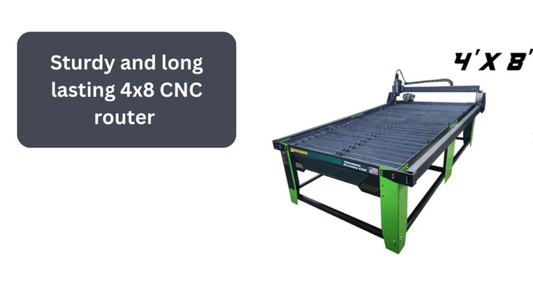The Art of Dominating CNC Plasma Tables: 5 Pro Tips to Master Metal Cutting like a Pro!
The Art of Dominating CNC Plasma Tables: 5 Pro Tips to Master Metal Cutting like a Pro!
In the world of metal cutting, precision and expertise are the keys to achieving exceptional results. If you want to become a true master of CNC plasma tables, where art meets technology, you must delve into the depths of this craft. Get ready for a transformative journey as we unveil the secrets to mastering metal cutting with CNC plasma tables. Join us as we share five pro tips that will take your craftsmanship to new heights.
Grasp the Basics: Understanding CNC Plasma Tables
To truly dominate CNC plasma tables, it is crucial to have a comprehensive understanding of how these machines operate. At the heart of their functionality lies the utilization of an electrically conductive gas that enables the creation of a high-temperature plasma arc. This plasma arc, when harnessed in conjunction with precise computer-controlled movements, empowers artists and fabricators to achieve intricate and precise cuts in a wide range of metals.
One of the fundamental aspects to comprehend is the process of electrically grounding the CNC plasma table. Proper grounding ensures the safety and stability of the machine during operation. By establishing a solid electrical connection between the table and the ground, any excess electrical charge is effectively dissipated, reducing the risk of electrical shocks and providing a stable platform for cutting operations.
Furthermore, a CNC plasma table consists of several key components that work harmoniously to facilitate the cutting process. These components include:
- Power Supply: The power supply unit generates the electrical current necessary to produce the plasma arc. It provides the energy required to ionize the gas and create the intense heat needed for metal cutting.
- Plasma Torch: The plasma torch is the handheld device that delivers the plasma arc to the metal surface. It typically incorporates a nozzle that focuses the plasma and a consumable electrode that maintains the electrical connection.
- CNC Controller: The CNC controller serves as the brain of the machine, interpreting the digital design files and generating precise instructions for the plasma torch's movement. It ensures the accurate execution of the desired cuts, guiding the torch along the predetermined path.
- Drive System: The drive system comprises motors, gears, and belts that enable the precise movement of the plasma torch along the X, Y, and Z axes. This system ensures smooth and accurate motion, translating the instructions from the CNC controller into physical movements.
By grasping the basics of CNC plasma tables, including the role of electrically grounding the machine and understanding the key components involved, you lay the foundation for mastering this powerful tool. With this knowledge in hand, you can confidently delve deeper into the intricacies of CNC plasma cutting and unlock the full potential of these remarkable machines.
The Art of Designing for CNC Plasma Cutting
To truly excel in the world of CNC plasma cutting, it is essential to master the art of designing specifically for this technique. Unlike traditional metalworking methods, CNC plasma cutting requires careful consideration of various factors to achieve optimal results. By taking into account crucial elements such as material thickness, cut complexity, and consumable selection, artists and fabricators can unleash the full potential of their CNC plasma tables.
When designing for CNC plasma cutting, material thickness plays a significant role in determining the cutting parameters and overall feasibility of the project. Different thicknesses require specific settings to achieve clean, precise cuts without excessive heat distortion or edge beveling. By understanding the capabilities of the CNC plasma table and the limitations of the chosen material, you can ensure that your designs align with practical cutting guidelines.
Moreover, the complexity of your desired cuts also influences the design process. Intricate designs with intricate curves, angles, or small details may require slower cutting speeds and higher precision. On the other hand, simpler designs or straight cuts may allow for faster cutting speeds. By carefully analyzing the complexity of your design, you can optimize cutting parameters to achieve the desired outcome efficiently.
Another critical consideration is the selection of consumables. Consumables, such as nozzles and electrodes, play a vital role in the quality and efficiency of the cutting process. The choice of consumables depends on factors such as material type, thickness, and cutting speed. Proper selection ensures optimal arc stability, reduces consumable wear, and enhances the overall cut quality. Experimenting with different consumables and understanding their impact on the cutting process will allow you to achieve the best results for your specific design.
To translate your artistic vision into precise digital blueprints, design software becomes an invaluable tool. Programs like ViaCAD or Fusion 360 enable you to create intricate designs, specify cut paths, and generate detailed files that are compatible with CNC plasma tables. These software packages offer a range of features, including 2D and 3D modeling, parametric design, and simulation capabilities. By leveraging the power of design software, you can transform your creative ideas into precise instructions that guide the movements of the CNC plasma table with accuracy and efficiency.
By mastering the art of designing specifically for CNC plasma cutting, taking into account factors such as material thickness, cut complexity, consumable selection, and utilizing design software effectively, you can unlock the full potential of your CNC plasma table. This harmonious integration of design and technology empowers artists and fabricators to bring their artistic visions to life with precision and elegance.
Master Cutting Techniques for Superior Results
To dominate CNC plasma tables, you must consistently refine your cutting techniques. Understanding factors like cutting speed, amperage, and offset distance is crucial for achieving clean cuts and minimizing material distortion or dross/slag . By optimizing pierce delay times and utilizing appropriate consumables, you can further enhance the quality and efficiency of your cuts .Not all plasma cutters start almost instantaneously and require a delay depending how long it takes from your computer sending the signal to the plasma cutter firing the plasma arc.
Choose the Right Materials for the Job
To master CNC plasma cutting, you need to have an in-depth understanding of different metals and their characteristics. Every metal has different melting points, conductivities, and reactions to heat. By selecting the right metal for each project, you can ensure optimal cutting results and enhance the overall quality of your finished pieces. For instance aluminum requires a special mixture of gasses to help in reducing rough edges and achieve cleaner cuts. The most often used methods are a water mist system while cutting or mixture of inert gasses in the plasma torch during cuts.
Prioritize Safety in Metal Cutting
While mastering CNC plasma tables is important, your safety during the cutting process is equally vital. Wearing appropriate protective gear, ensuring proper ventilation, and following safety protocols are essential for creating a safe and secure working environment. By maintaining a strong focus on safety, you can protect both yourself and your craft. Most CNC plasma tables come with a water pan system that helps in reducing smoke and small metal particles from polluting the air but with some materials such as aluminum a water pan system could cause a chemical recitation and produce hydrogen gas that could be potentially explosive. For plasma tables that just cut aluminum it is recommended to have a downdraft system and air filter to help in reducing metal particles in the air.




